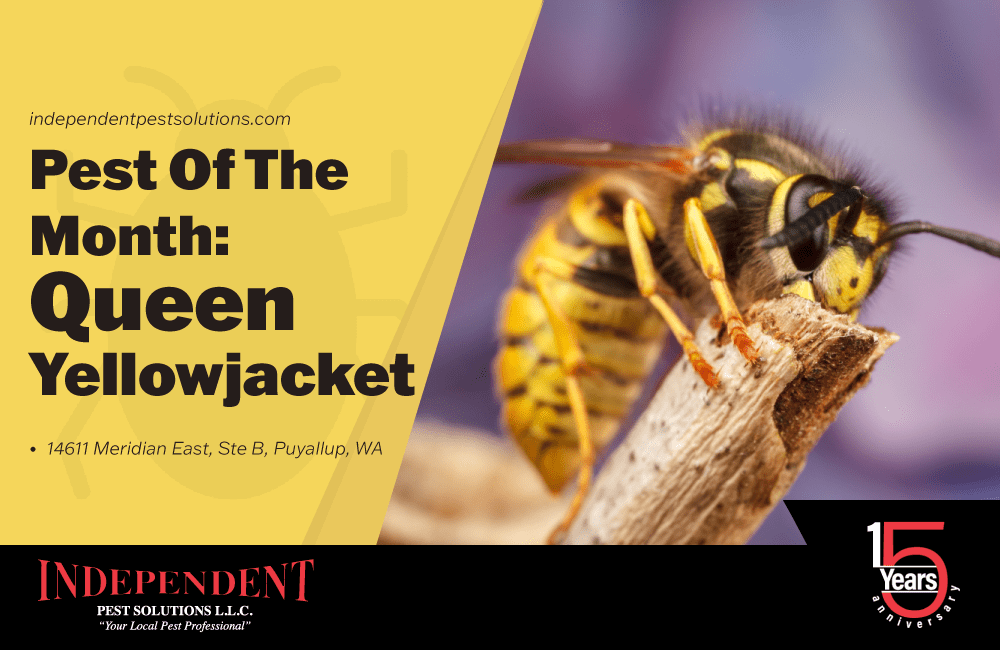Queen Yellowjackets begin new colonies in the spring time.
A queen yellow jacket begins a new colony in the spring. She builds a small paper nest where she lays her first batch of eggs. After the larvae hatch, the queen feeds them until it’s time for them to pupate and become mature yellow jackets. Adult yellow jackets live for just one season. As the spring season begins, yellow jackets start building their nests. Throughout the summer, they will lay their eggs. Their colonies can quickly have up to 4,000 workers, all of which are sterile females. Yellow jackets live in nests, and are social insects. The colony will be at its peak in the late summer and early fall. In the late summer, male individuals will mate with the female yellow jackets that will be queens the next year.
As fall arrives, the yellow jacket’s natural food supply will decrease, and the colony will begin to die off. At that point, yellow jackets become a big nuisance to humans as their behavior gets more aggressive and erratic. It’s a good idea to get rid of yellow jackets before the infestation spirals out of control. The fertilized female yellow jackets will hibernate during the winter and establish a new colony the following year. Yellow jackets don’t use old nests- they make new ones annually. The rest of the hive perishes in the cold weather.
So, what do yellow jackets look like? Yellow jackets are a type of wasp that have distinctive alternating yellow and black stripes. There are multiple species classified as “yellow jackets.” They are usually between 10 and 16 millimeters long and have thin, defined waists. Yellow jackets have long wings that rest at the sides of their bodies. It is common for people to mistake yellow jackets for bees, but they can be easily differentiated once you know what the differences are. Bees have more hair on their bodies, bigger hind legs to transport pollen, and rounded abdomens.

You may be wondering: “What do yellow jackets eat?” Yellow jackets have a varied diet. They enjoy eating sweet things, such as fruit, juice, nectar, tree sap, and sugary substances. They also eat protein. This includes bugs and insects, like grubs, caterpillars, flies, and more. Yellow jackets will also scavenge meat and fish that they can gain access to. Although yellow jackets are pollinators and can be beneficial by eating harmful pests, they can also be a big nuisance. They are attracted by smell to human foods and trash receptacles, which means that they might both you while you are outside or having a picnic.
Yellow jackets can sting humans if they feel threatened, and can be very territorial. If they are trying to protect their hive or they are out foraging, they may sting as defense. Although they often aggressively defend their hives, they aren’t usually quick to sting. Their stings can pose health risks to people, and are painful.
Yellow jackets are able to sting repeatedly because their stingers have small barbs. Honey bee stingers have larger barbs, so they cannot sting repeatedly. Unfortunately, many people are allergic to their stings, some severely. Over half a million people are sent to the emergency room because of stinging insects every year, and many people die. It’s important that a yellowjacket problem is swiftly taken care of so that nobody that lives or works in the area will be in danger. It’s smart to avoid being near yellow jacket nests, if possible.
Yellow jackets can live pretty much anywhere that humans do. They construct their nests out of chewed-up cellulose. Some yellow jacket nests are in bushes, branches, or cavernous areas on manmade structures, such as roof eaves, house siding, corners of buildings, and attics. However, most yellow jackets nest close to the ground. Their colonies can commonly be found beneath steps or porches, in sidewalk cracks, at the bases of trees, and even underground.
In most situations, yellow jackets do not cause structural damages to buildings and homes like other pests do. They might build their nests in the walls or the attic. Sometimes, yellow jackets have been known to chew through drywall and go inside buildings. This means that they will be in close proximity to the people living and working there, and may pose a threat to them.
It’s important that you know the signs of a yellow jacket infestation so that you can call an expert in stinging insect control. Yellow jackets are some of the most aggressive stinging pests in the Pacific Northwest. People usually realize that they have a yellow jacket colony on their property when they encounter worker insects. You may also see the actual nest. Try to monitor any yellow jacket activity you notice. It’s a good idea to take note of where the entrance to their nest might be. This will be helpful when it comes to treatment and prevention later. Independent Pest Solutions does pest control that suits the specific situations of our clients.
If you are looking for yellow jacket pest control in Puyallup, Independent Pest Solutions is the team for you. Reach out to our pest control technicians if you suspect that you have a yellow jacket problem on your hands. When yellow jackets feel threatened, they will attack and sting. It’s important that stinging insect pest control is done properly and thoroughly. Instead of trying to deal with the problem on your own, leave it to our experts. Our team members are experts at identifying what type of stinging insect problem you are dealing with, and we know the most effective extermination methods.
When Independent Pest Solutions gets rid of your yellow jacket problem, they will also implement measures to keep them from coming back again in the future. We will also offer advice such as making sure that doors and windows have good screens, removing garbage frequently, and keeping outdoors trashcans covered up. Another thing that you can do is not wear perfumes that smell sweet, because they can attract stinging pests. With our specialized pest control approach and extensive experience, our professionals can provide you with the best possible solution for your pest issue. When you need yellow jacket removal services, we are the ones to call. To learn more about the services we offer, reach out to us today.
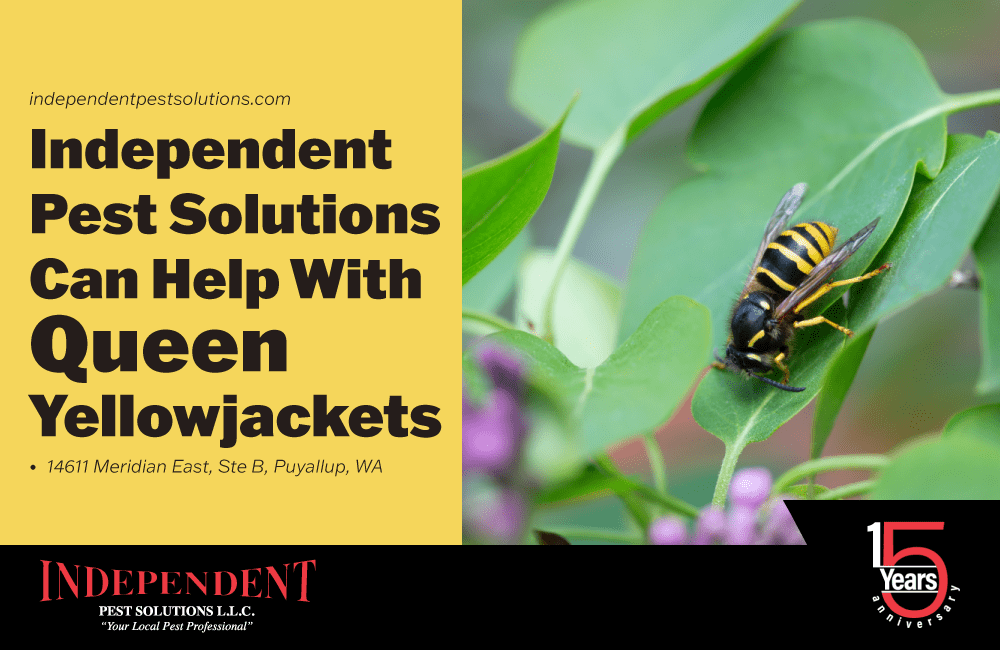
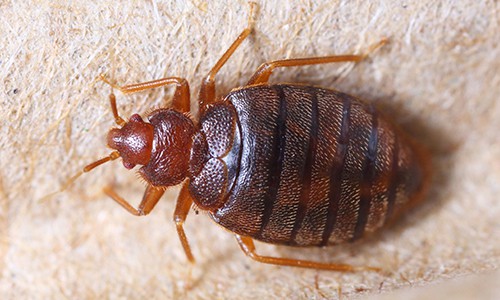
Bedbug Treatment
Pest control in WA.
Since the year 2000, bed bugs have been rapidly increasing throughout the USA.
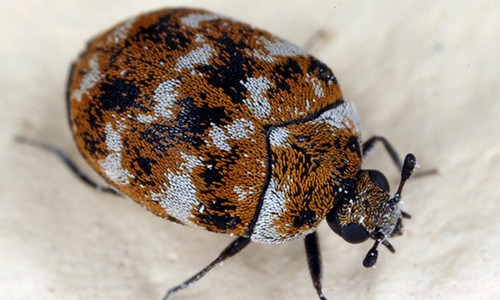
Carpet Beetle Extermination
Pest Control in WA.
Adult carpet beetles are pollinators, spending their days outside going from flower to flower.
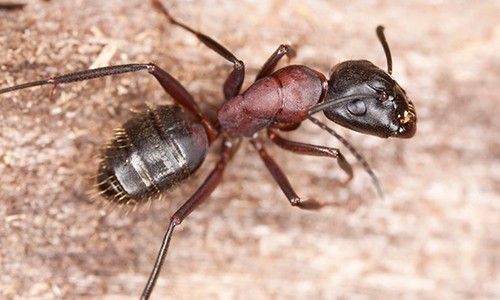
Carpenter Ant Extermination
pest control in wa.
Carpenter ants are a wood destroying organism but contrary to popular belief they do not actually consume the wood material.


